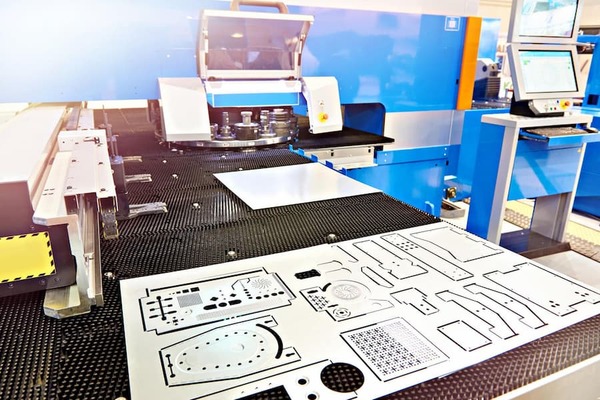In the realm of construction and building design, MEP (Mechanical, Electrical, Plumbing) systems play a crucial role in ensuring the functionality and efficiency of structures. Over the years, technological advancements have significantly transformed the way MEP drafting is conducted, ushering in a new era of innovation and efficiency.
Introduction to MEP Drafting
MEP drafting involves the creation of detailed technical drawings and plans for mechanical, electrical, and plumbing systems within a building. These drawings serve as blueprints for construction teams to follow during the building process, guiding the installation and integration of essential systems.
Traditional MEP Drafting Methods
Traditionally, MEP drafting was performed manually, with drafters meticulously creating drawings by hand using pencils, rulers, and drafting tables. While this method served its purpose, it was time-consuming and prone to errors, leading to inefficiencies in the design process.
Emergence of Technological Advancements
The advent of computer-aided design (CAD) software marked a significant turning point in MEP drafting. CAD tools enabled drafters to create digital drawings with greater precision and efficiency, reducing the time and effort required to produce detailed designs.
Building Information Modeling (BIM) in MEP Drafting
One of the most significant advancements in MEP drafting is the widespread adoption of Building Information Modeling (BIM) technology. Unlike traditional CAD software, which focuses primarily on 2D drawings, BIM allows for the creation of intelligent 3D models that incorporate valuable data about building components and systems.
Integration of AR and VR in MEP Drafting
In recent years, augmented reality (AR) and virtual reality (VR) have emerged as powerful tools for enhancing the MEP drafting process. AR technology enables designers to overlay digital MEP models onto real-world environments, providing a unique perspective on how systems will interact within a building. Similarly, VR simulations allow stakeholders to immerse themselves in virtual environments, gaining insights into the spatial layout and functionality of MEP systems.
.jpg)
Enhanced Collaboration and Communication
Technological advancements have also improved collaboration and communication among project stakeholders. With the rise of cloud-based collaboration platforms and communication tools, design teams can easily share MEP drawings and collaborate in real-time, regardless of their physical location.
Efficiency and Accuracy in MEP Drafting
One of the most significant benefits of technological advancements in MEP drafting is the increased efficiency and accuracy of the design process. Automated features within CAD and BIM software help streamline repetitive tasks, while advanced algorithms identify potential design conflicts early on, reducing the need for costly rework during construction.
Sustainability Integration in MEP Drafting
Another important aspect of modern MEP drafting is the integration of sustainable design principles. With growing concerns about climate change and environmental sustainability, MEP engineers are leveraging technology to design energy-efficient buildings with minimal environmental impact.
Challenges and Solutions
Despite the many benefits of technological advancements in MEP drafting, there are still challenges to overcome. These include the initial cost of implementing new technologies, resistance to change within the industry, and the need for ongoing training and education to ensure proficiency among design professionals.
Future Trends in MEP Drafting Technology
Looking ahead, the future of MEP drafting is likely to be shaped by emerging technologies such as artificial intelligence (AI) and predictive modeling. AI algorithms can analyze vast amounts of data to optimize building designs for energy efficiency and performance, while predictive modeling tools can forecast potential issues before they arise, allowing for proactive problem-solving.
Case Studies and Success Stories
Numerous case studies demonstrate the tangible benefits of adopting advanced MEP drafting technologies. From reducing project timelines and costs to improving overall project outcomes, these success stories highlight the transformative impact of technology on the construction industry.
.jpg)
Regulatory Compliance and Standards
In addition to technological advancements, MEP drafters must also adhere to industry regulations and standards. Building codes, safety regulations, and environmental guidelines all play a critical role in shaping the design and implementation of MEP systems, ensuring compliance with legal requirements and best practices.
Cost Implications and Return on Investment
While the upfront costs of adopting new MEP drafting technologies can be significant, the long-term benefits often outweigh the initial investment. By reducing construction errors, improving project efficiency, and enhancing building performance, advanced drafting tools offer a substantial return on investment for design firms and building owners alike.
Impact on Industry Professionals
Finally, the rise of technology in MEP drafting is reshaping the roles and skill sets of industry professionals. Designers and engineers must continually update their skills to keep pace with technological advancements, embracing lifelong learning and professional development opportunities to remain competitive in the evolving marketplace.
Conclusion
In conclusion, technological advancements have revolutionized the field of MEP drafting, offering unprecedented opportunities for innovation and efficiency. From the widespread adoption of BIM technology to the integration of AR and VR tools, the future of MEP drafting is bright and promising. By embracing these advancements and overcoming the associated challenges, design professionals can continue to drive positive change in the construction industry for years to come.
FAQs (Frequently Asked Questions)
-
What are the primary benefits of using BIM technology in MEP drafting?
- BIM technology offers benefits such as enhanced collaboration, improved accuracy, and better project visualization, leading to more efficient design processes and higher-quality outcomes.
-
How can augmented reality be applied in the context of MEP drafting?
- Augmented reality allows designers to overlay digital MEP models onto real-world environments, enabling stakeholders to visualize how systems will function within a building before construction begins.
-
What are some of the key challenges associated with adopting advanced MEP drafting technologies?
- Challenges include the initial cost of implementation, resistance to change within the industry, and the need for ongoing training and education to ensure proficiency among design professionals.
-
How do MEP drafters ensure compliance with industry regulations and standards?
- MEP drafters must stay up-to-date with building codes, safety regulations, and environmental guidelines to ensure that designs meet legal requirements and best practices.
-
What is the role of artificial intelligence in the future of MEP drafting?
- Artificial intelligence has the potential to revolutionize MEP drafting by analyzing data, optimizing designs for energy efficiency, and predicting potential issues before they arise, leading to more sustainable and cost-effective building solutions.



.jpg)
.jpg)
